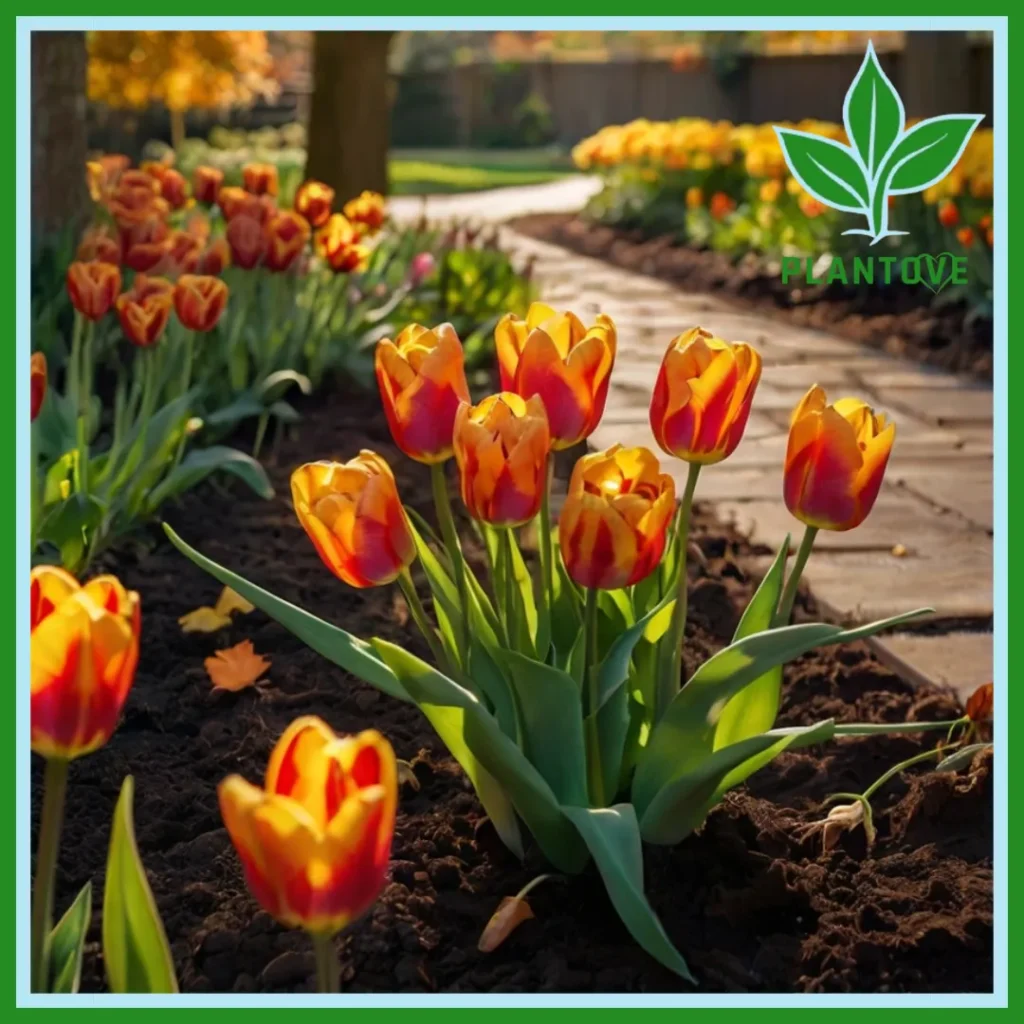Tulips are one of the most beloved spring flowers, known for their bright colors and classic shapes. They bring a burst of life to any garden after a long winter, and growing them can be rewarding for both beginners and experienced gardeners alike. However, the timing of planting tulip bulbs is critical for successful growth and vibrant blooms. In this comprehensive guide, we’ll explore when to plant tulips, why timing matters, and tips to help you enjoy beautiful tulips in your garden.
Understanding the Tulip Life Cycle
Tulips are perennial bulbs, which means they undergo a dormancy period and then bloom year after year. Like many other bulb plants, they need a period of cold dormancy to prepare for springtime flowering. This makes the timing of planting crucial. In order to develop strong roots and prepare for spring blooming, tulip bulbs should be planted in the fall when the soil temperature has cooled but before it freezes.
When to Plant Tulips: Timing Is Everything
The Ideal Time for Planting Tulips
The best time to plant tulips is in the fall, typically from late September to mid-November, depending on your location. The goal is to get the bulbs into the ground while the soil is cool but not frozen. In most regions, the soil temperature should be between 40°F (4°C) and 50°F (10°C). Planting tulips too early can cause the bulbs to sprout before winter, and planting them too late may not give them enough time to establish roots.
- In cooler climates (USDA zones 3-5): Plant tulips in late September or early October.
- In moderate climates (USDA zones 6-7): Mid-October to early November is ideal.
- In warmer climates (USDA zones 8-10): You may need to plant tulips in late November or early December. Additionally, in these warmer regions, tulip bulbs may require pre-chilling in a refrigerator for about 8-12 weeks before planting to simulate the cold period they need.
Why Fall Is the Best Time to Plant Tulips
Tulips need a chilling period to break dormancy and initiate the growth process. During the fall and winter months, the bulbs develop a strong root system that will support the plant as it grows and blooms in spring. Without sufficient cold exposure, tulip bulbs may fail to bloom or produce weak, undersized flowers. Planting in fall ensures the bulbs get the necessary cold period, followed by the warmth of spring to encourage blooming.
Factors That Influence When to Plant Tulips
While the fall season provides a general guideline for when to plant tulips, several factors can affect the exact timing, such as your climate, soil conditions, and local weather patterns. Here’s what you should consider:
- Soil Temperature: Use a soil thermometer to check the soil temperature. Ideally, the soil should be between 40°F and 50°F when planting tulips. If it’s too warm, wait a little longer to ensure the bulbs won’t sprout prematurely.
- Frost Dates: Pay attention to your area’s first frost date. Tulip bulbs should be planted about 6-8 weeks before the ground freezes to allow enough time for root establishment.
- Pre-chilling for Warm Climates: In regions where winter temperatures don’t consistently drop below 40°F, tulip bulbs should be pre-chilled in a refrigerator for about 8-12 weeks before planting. This mimics the cold dormancy period they need to flower.
How to Plant Tulips: Step-by-Step Guide

Now that you know when to plant tulips, it’s important to understand the planting process itself. Follow these steps for healthy, vibrant tulips:
- Choose Healthy Bulbs: Select firm, unblemished bulbs for planting. Larger bulbs generally produce bigger, more vibrant flowers.
- Prepare the Soil: Tulips thrive in well-draining soil. Amend the soil with compost or sand to improve drainage if necessary. Tulips are prone to rot in soggy or waterlogged soil.
- Plant at the Correct Depth: Plant tulip bulbs about 6-8 inches deep. The general rule of thumb is to plant bulbs at a depth that is two to three times their height. Space the bulbs about 4-6 inches apart.
- Point the Bulbs Right-Side Up: Tulip bulbs have a pointed end, which should face upward when planted.
- Water Thoroughly After Planting: After planting the bulbs, water them well to help them settle into the soil and start root development.
- Mulch for Insulation: Apply a layer of mulch over the planting area to protect the bulbs from extreme cold and to keep the soil moist.
Caring for Tulips After Planting
Once your tulips are planted, they require little maintenance over the winter. However, there are a few things to keep in mind:
- Watering: While tulip bulbs need water to establish roots, they do not require much additional watering in winter. Too much moisture can cause the bulbs to rot. Ensure the soil remains slightly moist, but avoid overwatering.
- Protection from Pests: Squirrels and other animals may dig up tulip bulbs. To protect your bulbs, consider placing a layer of chicken wire or a similar barrier over the planting area. The bulbs will still be able to grow through the wire, but it will deter pests.
- Monitoring for Frost Heaving: In regions with fluctuating temperatures, the freeze-thaw cycle can cause bulbs to heave out of the soil. Check periodically and gently press any bulbs back into place if necessary.
Common Mistakes When Planting Tulips
To ensure the best results when planting tulips, avoid these common mistakes:
- Planting Too Shallow: Planting tulip bulbs too close to the surface can expose them to temperature fluctuations and increase the risk of damage from frost or pests.
- Overwatering: Tulip bulbs are prone to rot if they sit in waterlogged soil. Ensure the soil is well-draining and avoid overwatering, especially in winter.
- Skipping the Chilling Period in Warm Climates: In warmer climates, tulips may fail to bloom without a cold dormancy period. Be sure to pre-chill the bulbs if necessary.
Can You Plant Tulips in Spring?
While fall is the optimal time to plant tulips, it is possible to plant tulip bulbs in early spring if they’ve been pre-chilled. However, spring planting often results in weaker blooms or delayed flowering. If you miss the fall planting window, try pre-chilling the bulbs for 8-12 weeks in the refrigerator before planting them as soon as the ground is workable in spring.
When to Expect Tulips to Bloom
Tulips typically bloom in early to late spring, depending on the variety and local climate. Early-blooming tulips may start flowering as soon as March in warmer regions, while late-blooming varieties can flower into May. To extend the blooming season, consider planting a mix of early, mid, and late-season tulip varieties. This will ensure that your garden has a steady display of color throughout the spring months.
Extending the Life of Tulip Blooms
To prolong the life of your tulip blooms, follow these care tips:
- Deadhead Spent Blooms: After the flowers fade, remove them promptly to prevent the plant from putting energy into seed production.
- Leave the Foliage: Allow the leaves to remain on the plant after blooming. The foliage helps the bulb recharge for the next season by photosynthesizing and storing energy.
- Water After Blooming: Continue watering the tulips until the leaves turn yellow and die back. Then, reduce watering to allow the bulbs to go dormant.
Conclusion
Tulips are a beautiful addition to any garden, offering a splash of color after the winter months. Knowing when to plant tulips is crucial for ensuring vibrant blooms in spring. By planting in the fall, caring for the bulbs properly, and avoiding common mistakes, you can enjoy a stunning tulip display year after year. So, grab your gardening tools and start planting those tulip bulbs this fall for a springtime garden full of breathtaking flowers!

